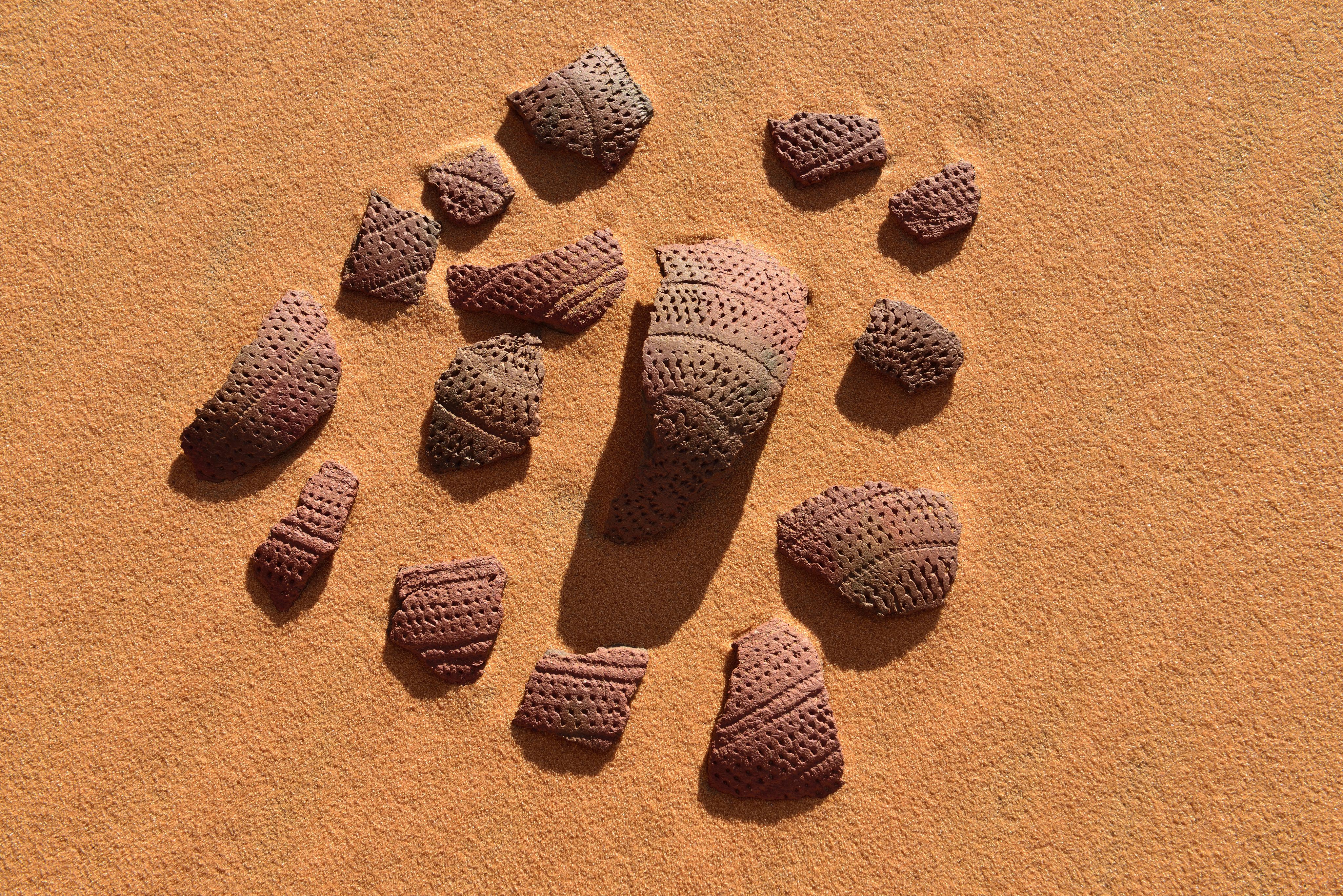Statistical models suggest multiple origins of ceramic technology in Africa

Pottery is one of the earliest transformative technologies in human history, marking new ways of storing, cooking, and processing food. In Africa, ceramics first appeared in the Sahara during the African Humid Period, around 11,000–10,000 years ago, when hunter-gatherer-fisher groups were adapting to environments of growing ecological productivity.
While several regions have been proposed as the birthplace of this innovation, researchers have long debated whether pottery in Africa emerged once or through multiple independent developments. The small sample sizes and high levels of chronological uncertainty associated with these finds have, so far, made this problem a particularly challenging one to tackle.
In a new study in Nature Communications, Rocco Rotunno and Enrico Crema from the University of Cambridge, compiled radiocarbon evidence from across Early Holocene Africa, including both sites with and without pottery.
Using novel statistical models of spatio-temporal diffusion, they compared different scenarios for the spread of ceramic technology. The analysis found the strongest support for models with dual or triple origins, suggesting independent centres of innovation in the Central Sahara, Nile Valley, and West Africa.
These findings challenge the idea of a single-point origin and emphasise the importance of localised technological choices, regional ecological conditions, and intergroup interaction. By refining the chronology and modelling the spread of ceramics, the study provides new insights into the role of innovation and connectivity in shaping the cultural trajectories of early African societies.
Lead author Rocco Rotunno is an Africanist archaeologist and UKRI-MSCA Research Fellow at the McDonald Institute for Archaeological Research. His work focuses on Holocene North and East Africa, exploring human–environment relationships over the last 12,000 years. He specialises in early pottery traditions, combining chrono-typologies and technological analysis to investigate cultural choices, interaction networks, and innovation. Alongside ceramics, he studies site formation processes as proxies for socio-economic dynamics, linking material culture with broader questions of chronology and social complexity. Through this integrated approach, his research seeks to redefine cultural trajectories in the Sahara and beyond, highlighting how technological traditions were transmitted, adapted, and transformed within prehistoric communities.
Senior author Enrico Crema is professor of quantitative and comparative archaeology at department of archaeology, University of Cambridge. His work focuses on the development and application of quantitative approaches to investigate a wide range of themes, including population dynamics, inequality, settlement patterns, and diffusion of innovations.
The EHSCAN project hosted at the Institute investigates the diffusion of technological innovations in Early Holocene North Africa. Using archaeological data with statistical and computational modelling, he examines networks of interaction, mobility, and exchange among Saharan hunter-gatherer-fisher communities. More broadly, his research focuses on the mechanisms that shape material culture and intra-cultural variability in later prehistory.
This research was funded by EHSCAN-Exploring Early Holocene Saharan Cultural Adaptation and social Networks through socio-ecological inferential modelling. (Engineering and Physical Sciences Research Council (EPSRC) #EP/Y028430/1; Awarded to: E.Crema & R.Rotunno) and the Philip Leverhulme Prize (#PLP-2019–304 Awarded to: E.Crema).
Published 9 October 2025
The text in this work is licensed under a Creative Commons Attribution 4.0 International License


